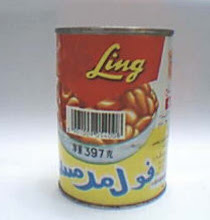Inspired by Geoff's recent sign-hunting expedition into country Victoria, I headed out yesterday on my own ghost sign adventure tour.
I pointed the Volvo north-west towards the gold mining towns an hour or so out of town. My bicycle was in the back and in the front sat a cassette audio book of the Morris West novel 'Summer of the Red Wolf' that I'd found in a local op shop (there's an advantage to owning a late 90s car with both a CD and cassette player).
I've always found the gold country fascinating, having spent a lot of time in Ballarat and Clunes in the 1990s via friends and gigging in bands, and more recently on mountain bike trips around Vaughan and Castlemaine. It's an endlessly interesting part of Victoria, the 'engine room' of Melbourne's rapid growth into the world's richest city by the 1880s - only 50 or so years after its founding. Parts of the countryside still look completely dug over by what seems like hoards of giant moles. The now-abandoned hills once had countless thousands of people living on them in canvas tents and then wooden huts: Irish fortune seekers, former city clerks and tradespeople looking to make good, Chinese miners and market gardeners, colonial bureaucrats and police.
This history is also directly related to Melbourne's status as a ghost sign city. The gold rush powered a massive building and economic boom that continued into the 1880s until a spectacular economic crash in the 1890s that left the city (and Australia) depressed for decades. This boom/bust cycle typifies Melbourne, and makes it fertile ground for ghost signs: buildings are constructed, then neglected, then (eventually) repurposed.
Strangely enough, the Morris West book (about a world-weary, dispirited man who goes to rural Scotland to rekindle his sense of life purpose) touches on related themes of modernity and change. Of course, decades before 1971 when the book was written, West was the founder and manager of Australasian Radio Productions, whose records I found in February 2012 alongside the sign writing documents (see first posts of this blog).
Anyway, enough words - time for some ghost sign photos. First, Clunes, Victoria's first gold town, very much worth a visit if you're in Ballarat and surrounds:
I pointed the Volvo north-west towards the gold mining towns an hour or so out of town. My bicycle was in the back and in the front sat a cassette audio book of the Morris West novel 'Summer of the Red Wolf' that I'd found in a local op shop (there's an advantage to owning a late 90s car with both a CD and cassette player).
I've always found the gold country fascinating, having spent a lot of time in Ballarat and Clunes in the 1990s via friends and gigging in bands, and more recently on mountain bike trips around Vaughan and Castlemaine. It's an endlessly interesting part of Victoria, the 'engine room' of Melbourne's rapid growth into the world's richest city by the 1880s - only 50 or so years after its founding. Parts of the countryside still look completely dug over by what seems like hoards of giant moles. The now-abandoned hills once had countless thousands of people living on them in canvas tents and then wooden huts: Irish fortune seekers, former city clerks and tradespeople looking to make good, Chinese miners and market gardeners, colonial bureaucrats and police.
This history is also directly related to Melbourne's status as a ghost sign city. The gold rush powered a massive building and economic boom that continued into the 1880s until a spectacular economic crash in the 1890s that left the city (and Australia) depressed for decades. This boom/bust cycle typifies Melbourne, and makes it fertile ground for ghost signs: buildings are constructed, then neglected, then (eventually) repurposed.
Strangely enough, the Morris West book (about a world-weary, dispirited man who goes to rural Scotland to rekindle his sense of life purpose) touches on related themes of modernity and change. Of course, decades before 1971 when the book was written, West was the founder and manager of Australasian Radio Productions, whose records I found in February 2012 alongside the sign writing documents (see first posts of this blog).
Anyway, enough words - time for some ghost sign photos. First, Clunes, Victoria's first gold town, very much worth a visit if you're in Ballarat and surrounds:
 |
| The ghost pegasus at the back of the old Fraser Street garage. Used to have the red Mobil pegasus, as featured in many of the Lewis & Skinner job sheets from the 1950s (as an example: http://lewisandskinner.com/items/show/1644). I was excited to see my first actual Pegasus. And it looks like the original red horsey was there until recently - maybe someone snaffled it? Or it was moved during the 2010-2011 floods? Kinda nicer like this in some ways. It used to look like this: http://www.redbubble.com/people/mortelliti/works/7838113-clunes-garage?c=102217-signage http://www.redbubble.com/people/salieri1627/works/3886073-old-style-service-clunes-victoria-the-hdr-experience And looks like I completely missed the pegasus in relief above the front (doh): https://blogger.googleusercontent.com/img/b/R29vZ2xl/AVvXsEiQpPv00K7ooCAD0CKCl7znUIRgsKAPNA3UH3oRo7db18dAHZ-uOius1YvGGzCvjZdAD5vZTHqxkVaeHcNBlk4YFDdu1lLeeYren_2GOnvBkR9ayyHXP5pRSxmnGbndrq6e6mvLbi2bPe4/s1600/IMG_4759.JPG Rest of the garage follows: |
 |
| See the "Mobilubrication"? |
 |
| Hint of Tower Hotel ghost sign hidden by the garage. The other side is here: |
 |
| Across the road from the garage above: |
Other Clunes signs:
 |
| With the remains of the Velvet Soap cross |
 |
| Apparently this butcher recently retired at 84, and a 'butcher' sign on the awning has been painted over, much to the consternation of some locals. |
 |
| Just for interest - the spot on the hill above town where, officially, gold was first found in Victoria in 1851. |

















No comments:
Post a Comment